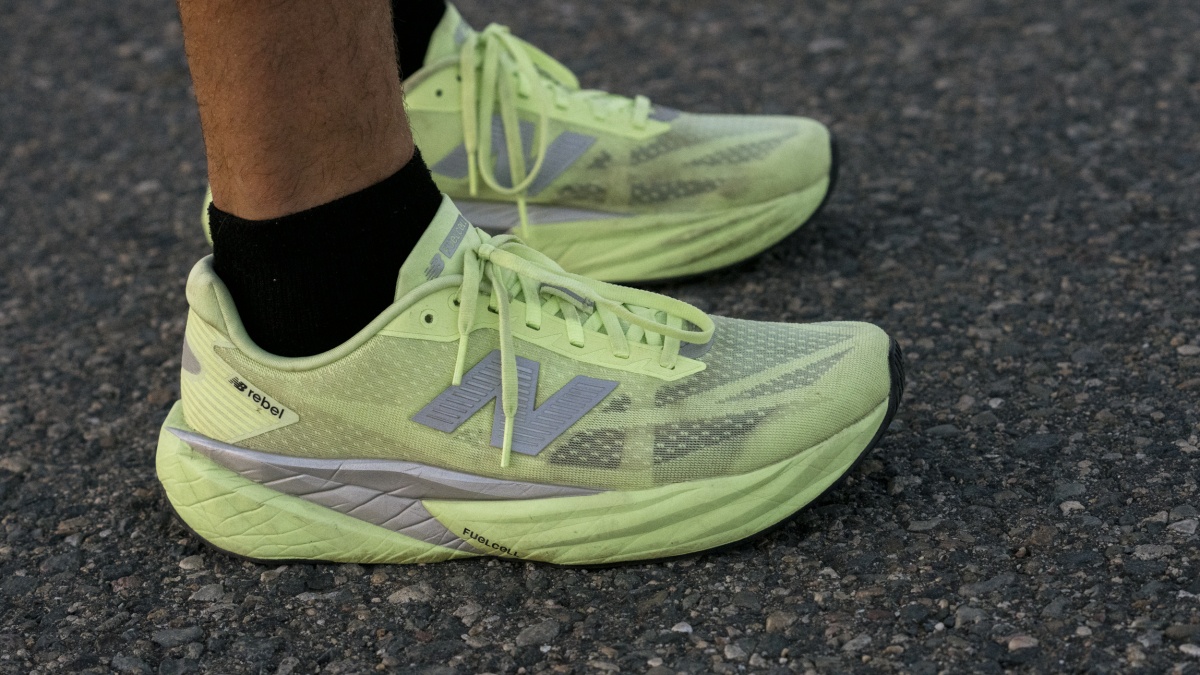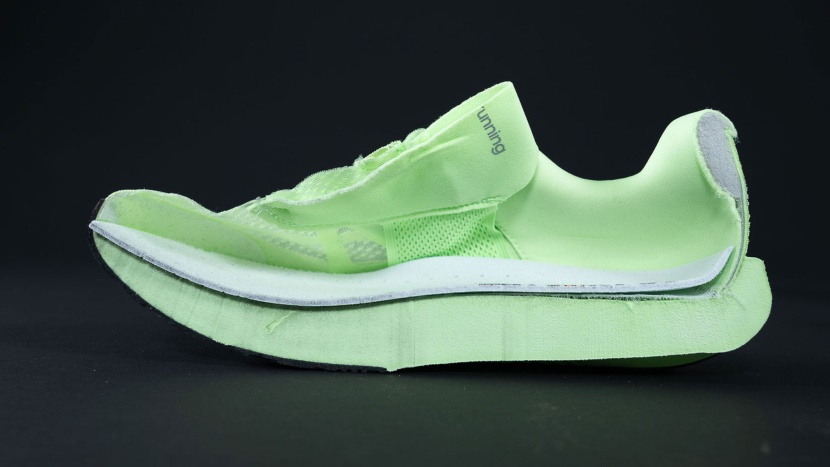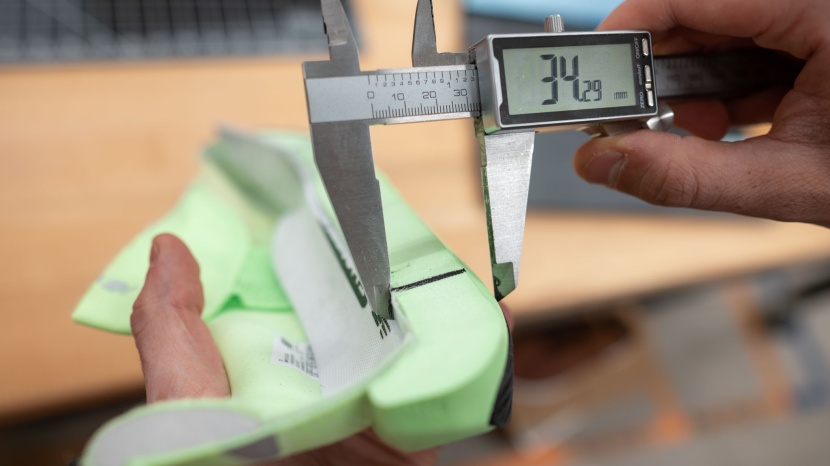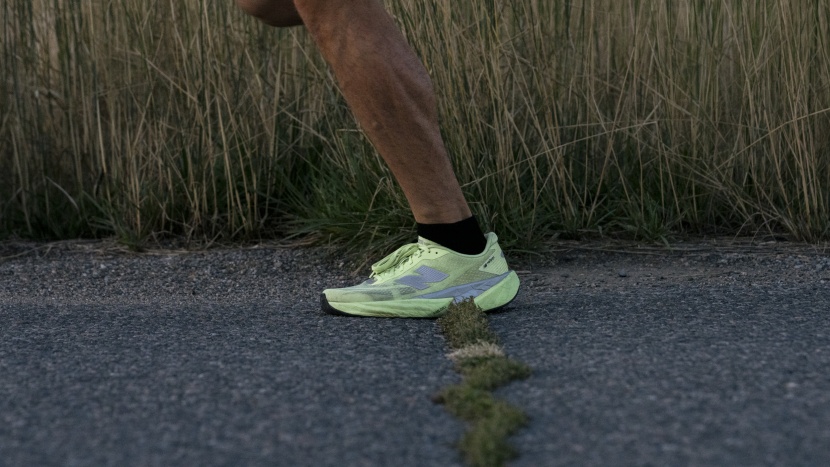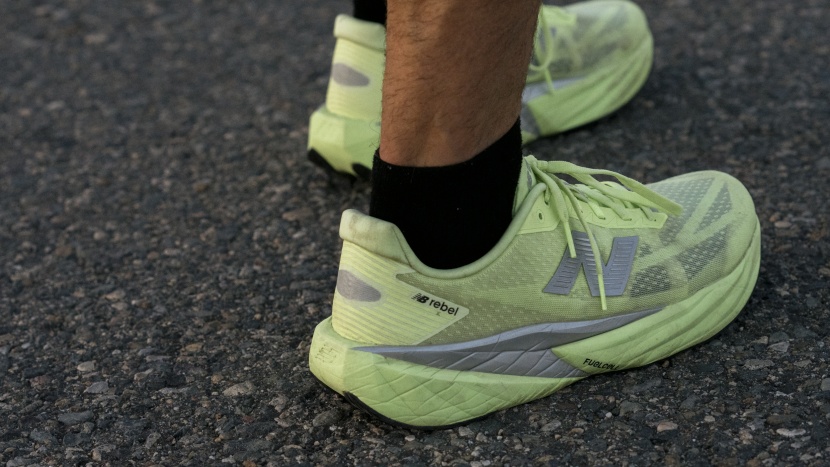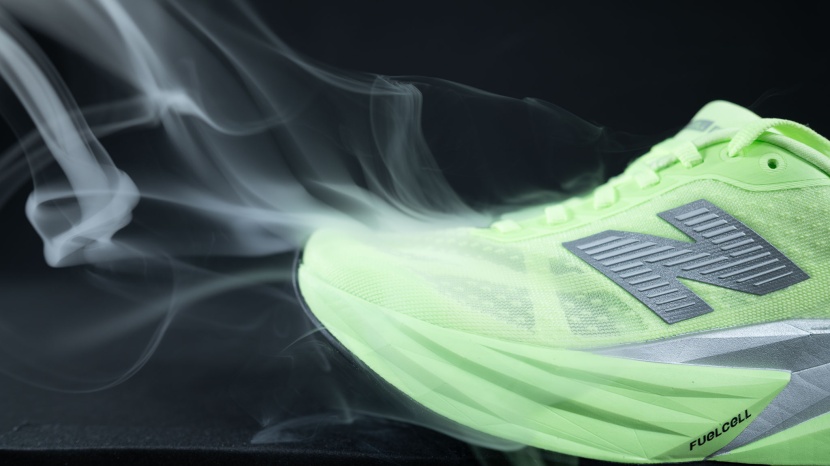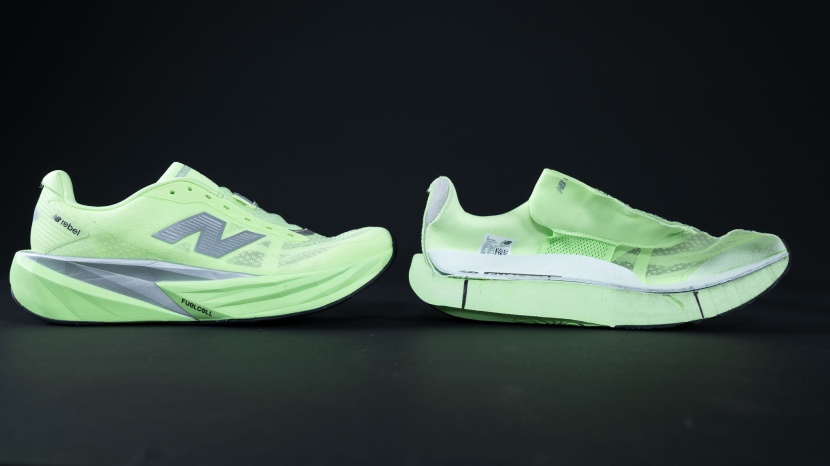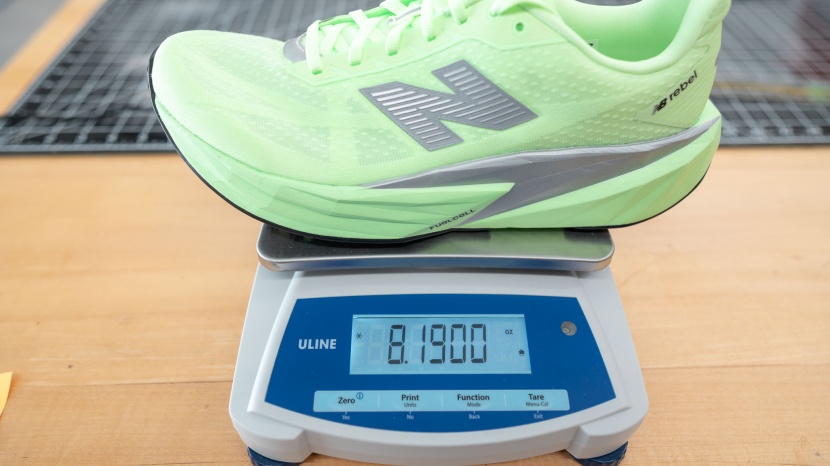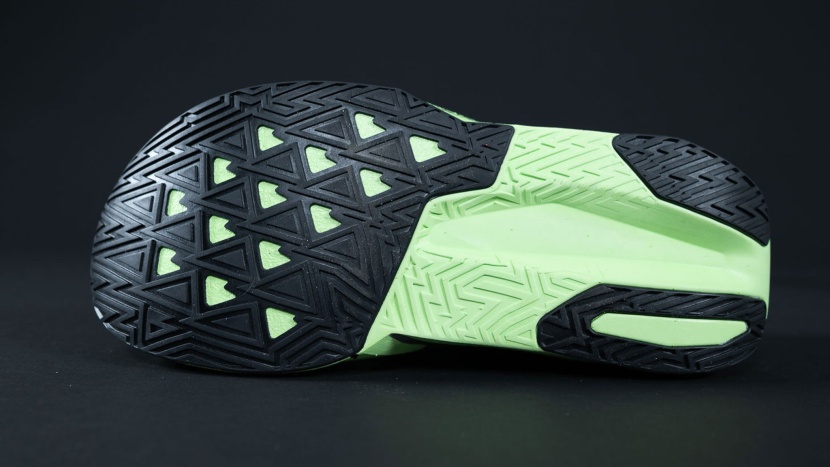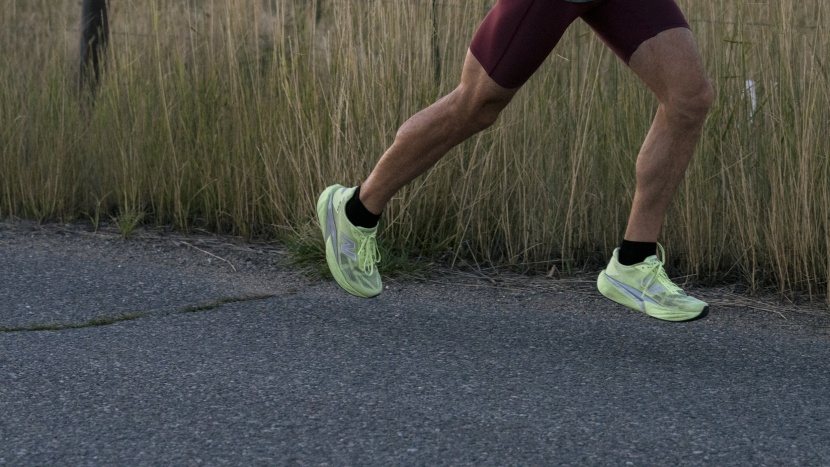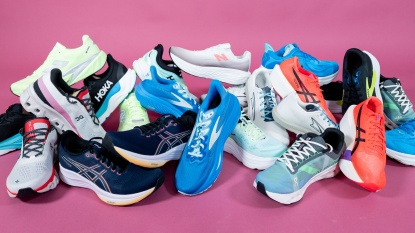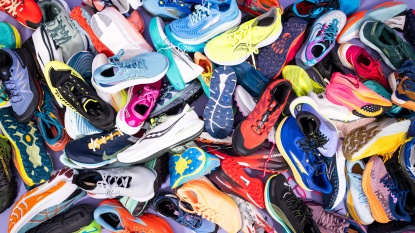
Our Verdict
Our Analysis and Test Results
The Rebel has been a popular shoe for quite a while because it's fun to run in.
Cushioning
New Balance's FuelCell foam in the Rebel v5 is a PEBA/EVA combination. As a result, the midsole has a significant amount of energy return and feels very forgiving underfoot.
It's a pretty soft shoe, with more of a pillowy feeling underfoot than most competitors, so runners who love soft shoes will feel right at home. We measured 34 mm stack height and a 7 mm drop, which is lower than some competitors, but the softer foam doesn't make that obvious.
On the run, we experienced a shoe that helped keep our legs feeling energetic on long efforts. The Rebel felt great during runs of about 90 minutes, although the softer foam worked our legs a little more than a shoe with a bit more structure. While it isn't our first choice for those runs, it isn't the worst choice.
Responsiveness
The Rebel v5 is a versatile shoe. While it feels soft underfoot, which makes faster paces feel a little harder, it has plenty of energy return for 5K-marathon speeds. The gentle rocker feels natural and slightly less pronounced than in the last version, but it still aids in pushing you forward. Overall, this shoe is more than capable of being a do-it-all shoe for many runners.
Upper Comfort
The lightweight and racy upper of the Rebel is comfortable and much improved from the last version. Thanks to additional padding and soft-touch materials on the heel, we didn't experience any of the rubbing we did with the previous version.
The tongue of the shoe works well to prevent rubbing even when the laces are cinched down tightly, and it doesn't move while on the run. Thanks to the airy engineered-mesh upper, it breathes well in the heat. Overall, this is a solid upper, but not an exceptionally comfortable one, making it better suited for running than everyday wear running errands.
Stability
The Rebel's midsole is soft, detracting from its overall stability. While it has a broader base, the foam doesn't have much structure. Plus, there isn't much by way of extra arch support or sidewalls. So, if you have weak ankles or pronation-related issues, you'll likely find that these shoes don't have as much stability as you want or need. While we think most runners will be happy with the shoe's stability, you should know that it is somewhat limited and not suitable for everyone.
Weight
The Rebel v5 weighs 8.19 ounces in a US Men's 10.5, which is very light for a daily trainer.
Light shoes are a joy to run in, moving effortlessly and keeping you feeling fresh for longer.
Traction
This shoe has solid traction, but nothing that stands out. The rubber outsole has good coverage, with enough grooves to make traction on crushed gravel paths decent. We didn't experience any issues with traction, but did note that larger rocks can be felt through the shoe more so than competitors with a thicker outsole.
Should You Buy the New Balance FuelCell Rebel v5?
This is one of the better do-it-all daily trainers we tested. Thanks to a low weight and an energetic feel, the Rebel v5 is as comfortable knocking out easy mileage as tackling a marathon-pace workout. While it does offer some top-end, we think runners looking for a workout-specific shoe should consider other options. Runners who need stability should look for a shoe with a slightly firmer ride.
What Other Running Shoes Should You Consider?
The key competitor to the Rebel v5 is the Adidas Adizero Evo SL, and we think the Evo is the better shoe. It offers a more energetic feel and more stability while still remaining very comfortable for long runs. Another go-to option in the do-it-all category is the Asics Novablast 5, which errs more on the side of comfort but is still capable of picking up the pace for your hardest workouts.


